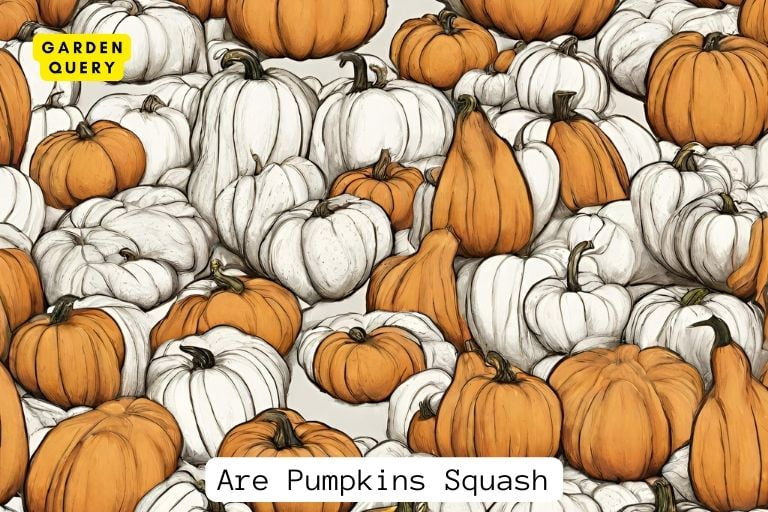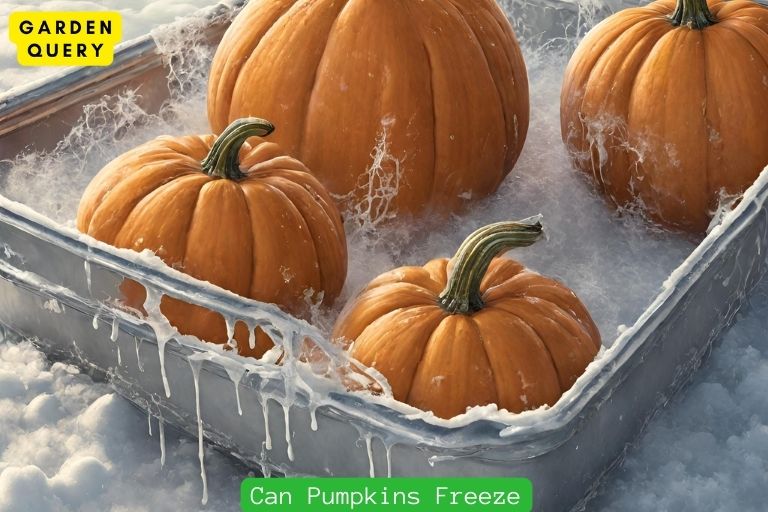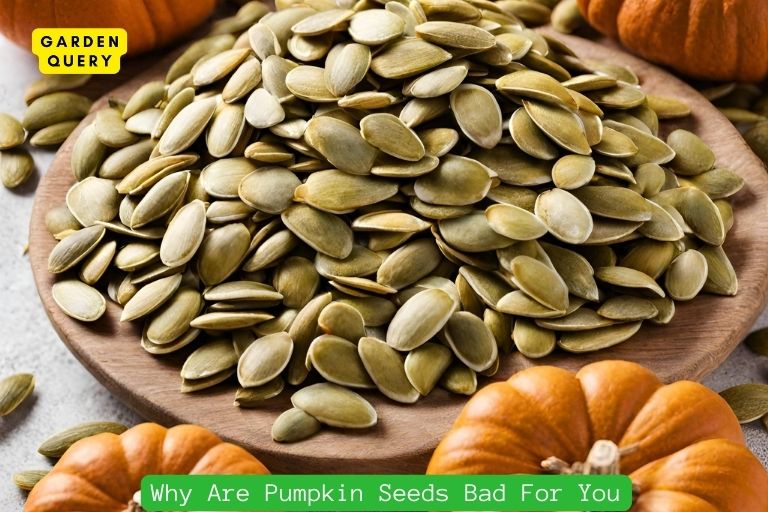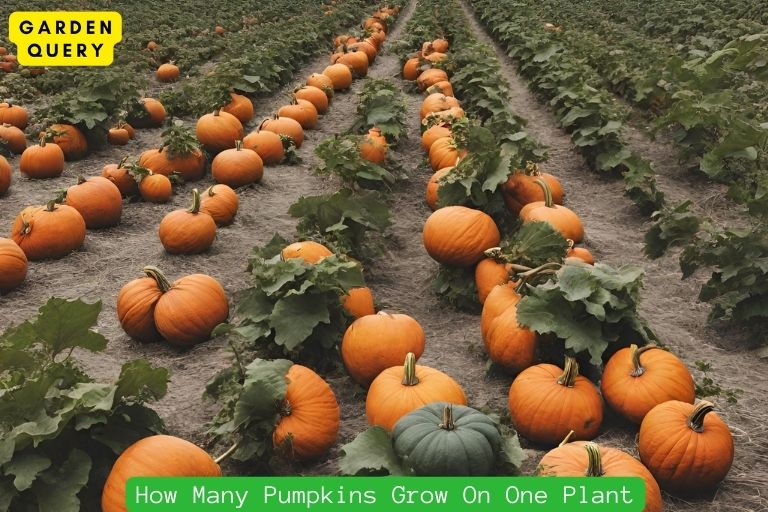Are Pumpkins Squash?
Yes, pumpkins are a type of squash.
- Botanical Kinship: Pumpkins and squash are intertwined in the vast botanical family known as Cucurbitaceae. This family encompasses a diverse range of gourds, with pumpkins holding a distinct place among them. The shared genetic heritage among pumpkins and other squash varieties highlights their botanical kinship.
- Genus Classification: Within the Cucurbitaceae family, pumpkins are classified under the genus Cucurbita. This genus includes several species, such as C. pepo and C. moschata, to which pumpkins belong. Understanding this classification is key to recognizing the broader family ties that bind pumpkins and squash.
- Pumpkins as Squash: The term “squash” encompasses a variety of gourds, and pumpkins fall under this umbrella. While pumpkins share the squash label, it’s essential to note that not all squashes are pumpkins. Squashes collectively refer to a diverse group of vegetables with distinct shapes, sizes, and flavors.
- Distinguishing Features: Pumpkins possess unique characteristics that set them apart within the squash family. Typically larger and with a thicker skin, pumpkins are known for their iconic orange hue. These distinguishing features make it possible to identify pumpkins amidst the broader spectrum of squash varieties.
- Culinary and Decorative Uses: Beyond their botanical connection, pumpkins and squash are versatile in both culinary and decorative realms. From savory dishes like roasted pumpkin soup to sweet treats like pumpkin pie, these gourds play a central role in fall cuisine. Additionally, their use as decorative elements during harvest festivals and Halloween further underscores their cultural significance.
Key Takeaway
Pumpkins Squash
What are pumpkins and squash?
Pumpkins and squash are both members of the Cucurbitaceae family, which also includes cucumbers and melons. They are edible fruits that are commonly used in culinary preparations around the world. However, while pumpkins and squash share similarities, they are not the same thing.

Pumpkins are a type of winter squash that are typically round or oblong in shape. They are known for their bright orange color and are popularly used as decorations during the Halloween season. Pumpkins have a mildly sweet taste and are often used in dishes like pies, soups, and roasted vegetables. They are also rich in vitamins A and C, making them a nutritious addition to your diet.
Squash, on the other hand, is a broad term that encompasses many different varieties. There are summer squash like zucchini, which have a softer skin and are often harvested when they are young and tender. Winter squash, like butternut squash and acorn squash, have a harder skin and are harvested when fully ripe. Squash comes in a variety of shapes, sizes, and colors, ranging from green and yellow to orange and even striped patterns. It can be prepared in a multitude of ways, from sautéing and roasting to grilling and stuffing.
Differences between pumpkins and squash
The main difference between pumpkins and squash lies in their appearance and usage. Pumpkins are typically larger and have a more distinct shape compared to other types of squash. They are often used decoratively and are associated with autumn and the holiday season. Squash, on the other hand, come in a wider range of shapes and sizes, and they are used in various culinary applications throughout the year.
In terms of taste, pumpkins tend to have a sweeter flavor compared to most squash varieties. Their flesh is smooth and creamy, while squash can have varying textures and flavors depending on the specific variety. Additionally, pumpkins have a higher water content than many types of squash, which can affect their cooking and baking properties.
In conclusion, while pumpkins are a type of squash, not all squash are pumpkins. Pumpkins have their own unique characteristics and are often used for specific purposes, such as carving and making pumpkin pie. Squash, on the other hand, offer a wider range of flavors and textures, making them versatile ingredients in the kitchen. So the next time you encounter these colorful fruits, you’ll know the difference between pumpkins and squash
Types of Pumpkins
Common types of pumpkins
Pumpkins are iconic symbols of autumn and Halloween, but did you know that there are different types of pumpkins? The most common types of pumpkins include:
- Jack-o’-lantern pumpkins: These are the classic pumpkins used for carving spooky faces. They have a round shape, smooth skin, and are medium to large in size. They are perfect for making homemade pumpkin pies and other delicious treats.
- Sugar pumpkins: Also known as pie pumpkins, sugar pumpkins are smaller in size and have a sweeter, smoother flesh. They are ideal for making pumpkin puree for pies, soups, and other savory dishes.
- White pumpkins: These unique pumpkins have a pale white or ivory skin. They are increasingly popular for decorating and can add an elegant touch to your autumn displays.
Varieties of squash that resemble pumpkins
While pumpkins are a type of squash, not all squash are pumpkins. However, there are some varieties of squash that closely resemble pumpkins and can be used as substitutes in recipes. Some of these include:
- Butternut squash: This squash has a similar shape to a pumpkin, but with a more elongated neck. It has a sweet and nutty flavor, making it perfect for both sweet and savory dishes.
- Acorn squash: Acorn squash has a distinctive ridged shape and is usually smaller in size. It has a slightly sweet and nutty flavor and is delicious when roasted or stuffed.
- Kabocha squash: Known for its vibrant orange flesh and green outer skin, kabocha squash is often used as a pumpkin substitute in Asian cuisine. It has a rich and sweet flavor.
So, the next time you come across a squash that looks like a pumpkin, remember that while it may not be a pumpkin, it can still be a delicious and versatile ingredient in your fall cooking adventures.
In summary, pumpkins come in different varieties such as jack-o’-lantern pumpkins, sugar pumpkins, and white pumpkins. However, there are also squash varieties like butternut squash, acorn squash, and kabocha squash that resemble pumpkins and can be used in a variety of recipes. Whether you’re baking a pie or creating a festive centerpiece, these pumpkin-like options offer a flavorful and decorative alternative.
Similarities Between Pumpkins and Squash
Pumpkins and squash are both members of the Cucurbita family, and they share several key characteristics. Many people wonder if pumpkins are squash or vice versa. Let’s explore their similarities and understand the relationship between the two.
Physical characteristics shared by pumpkins and squash
- Shape and size: Pumpkins and squash come in various shapes and sizes, ranging from small and round to large and oblong. They share a similar appearance, with a hard outer rind and a fleshy interior.
- Color: Both pumpkins and squash display a wide range of vibrant colors, including shades of orange, green, yellow, and even white. These colors add to their visual appeal and make them popular choices for seasonal decorations.
- Texture: The pulp of pumpkins and squash has a similar texture, characterized by its soft and moist consistency.
Nutritional value and health benefits
- Vitamins and minerals: Pumpkins and squash are both low in calories and rich in essential vitamins and minerals. They contain vitamins A, C, and E, as well as potassium and fiber. These nutrients contribute to maintaining a healthy immune system and promoting good digestion.
- Antioxidants: Both pumpkins and squash are loaded with antioxidants, such as beta-carotene, which is converted to vitamin A in the body. Antioxidants help neutralize harmful free radicals and protect cells from damage.
- Heart health: The fiber content in pumpkins and squash can help lower cholesterol levels and reduce the risk of heart disease. Additionally, the presence of potassium in these vegetables promotes healthy blood pressure levels.
- Weight management: Pumpkins and squash are low in calories and high in fiber, making them a valuable addition to a weight management diet. The fiber keeps you feeling fuller for longer, reducing the chances of overeating.
While pumpkins and squash share these similarities, it’s important to note that there are also some differences between the two. Pumpkins are typically larger and have a sweeter flavor, while squash varieties can vary in taste and texture. However, they are all part of the same family and offer numerous health benefits.
In conclusion, pumpkins are a type of squash, but not all squash are pumpkins. Both have similar physical characteristics and provide comparable nutritional value. Whether you’re enjoying a pumpkin pie or a bowl of butternut squash soup, you can’t go wrong with incorporating these versatile and nutritious vegetables into your diet.
Differences Between Pumpkins and Squash
Distinctive features of pumpkins
Pumpkins are a type of squash, but they have some features that distinguish them from other members of the squash family. Here are a few notable characteristics of pumpkins:
- Shape and Size: Pumpkins often have a round or oval shape, and they can vary in size from small to large. They can also have a ribbed or smooth exterior.
- Color: While most pumpkins are known for their vibrant orange color, they can also come in various shades of yellow, green, or even white.
- Stem: Pumpkins are typically characterized by their hard and sturdy stem, which is often attached to the top of the fruit.
- Texture: The flesh of pumpkins is generally thick and dense, making it ideal for cooking and baking.
- Traditional association: Pumpkins are widely recognized for their association with festive occasions such as Halloween and Thanksgiving, where they are carved into jack-o’-lanterns or used in traditional dishes like pumpkin pie.
Unique characteristics of squash
Squash is a broad category that encompasses various types, including pumpkins. While pumpkins have their distinctive features, here are some unique characteristics associated with squash in general:
- Shape and Size: Squash can come in different shapes, including round, elongated, or even crooknecked. They can vary in size, with some being small and others growing to be quite large.
- Color: Squash can have a range of colors, from deep green to yellow, orange, or even multicolored patterns.
- Edible and inedible varieties: Squash includes both edible varieties (such as zucchini and butternut squash) and inedible varieties (such as decorative gourds).
- Flesh and flavor: The flesh of squash can vary in texture and flavor. Some varieties have a dense, fibrous texture, while others are more tender. The taste can range from sweet to savory.
- Versatility: Squash is a versatile ingredient in various cuisines. It can be roasted, sautéed, pureed, or used in soups, stews, salads, or even desserts.
While pumpkins are a specific type of squash, they have their unique characteristics that set them apart. Understanding these differences can give you a broader appreciation for the diverse world of squash and help you make informed choices in your cooking and decorating endeavors.
Cooking and Culinary Uses
When it comes to fall and Halloween traditions, pumpkins are a staple. But are pumpkins considered squash? The answer is yes! Pumpkins belong to the gourd family, which includes various types of squash. They are versatile ingredients that can be used in a variety of dishes, from sweet to savory. Let’s explore some ways to cook and prepare pumpkins, as well as popular recipes using squash.
Ways to cook and prepare pumpkins
- Roasting: Roasting pumpkin brings out its natural sweetness and creates a tender and flavorful result. Simply cut the pumpkin into wedges, remove the seeds and strings, and roast at 375°F for about 45 minutes, or until the flesh is easily pierced with a fork.
- Pureeing: Pumpkin puree is a common ingredient in many recipes, especially for baked goods like pumpkin pie and pumpkin bread. To make puree, simply cut the pumpkin into chunks, remove the seeds, and steam or boil until tender. Then, blend or mash the cooked pumpkin until smooth.
- Soup: Pumpkin soup is a comforting and delicious option, especially during the colder months. You can make a creamy pumpkin soup by sautéing onions and garlic, adding roasted or pureed pumpkin, vegetable broth, and spices like nutmeg and cinnamon. Simmer until flavors meld together, then blend until smooth.
Popular recipes using squash
- Pumpkin pie: A classic dessert during the holiday season, pumpkin pie is made with a sweet pumpkin filling and a flaky crust. The filling is typically made with pumpkin puree, eggs, sugar, spices like cinnamon and cloves, and evaporated milk. It’s then baked until set and served with whipped cream.
- Butternut squash soup: Butternut squash soup is a creamy and comforting dish that highlights the natural sweetness of the squash. The squash is roasted or boiled until tender, then blended with sautéed onions, garlic, vegetable broth, and spices. It’s finished with a drizzle of cream and garnished with croutons or herbs.
- Acorn squash stuffed with quinoa: Acorn squash makes a delicious edible bowl for a hearty and nutritious quinoa stuffing. Simply cut the squash in half, remove the seeds, and roast until tender. Meanwhile, cook quinoa, sauté vegetables like onions and mushrooms, and mix them together. Fill the roasted acorn squash halves with the quinoa stuffing and bake until golden and crispy.
Pumpkins and squash offer a range of culinary possibilities. Whether you roast them, puree them, or use them in soups and desserts, their rich and earthy flavors are sure to delight. So next time you come across a pumpkin or squash, don’t hesitate to get creative in the kitchen!
Harvesting and Growing Pumpkins and Squash
Are pumpkins squash? This is a common question asked by many gardeners and pumpkin enthusiasts. The short answer is yes, pumpkins are indeed a type of squash. But let’s dive deeper into the topic to learn more about the similarities and differences between pumpkins and squash.
Tips for growing pumpkins and squash
Growing pumpkins and squash in your garden can be a rewarding experience. Here are some tips to help you successfully cultivate these versatile and delicious vegetables:
- Choose the right variety: There are numerous varieties of pumpkins and squash, each with its own unique characteristics and flavor profile. Research different varieties and select the ones that are best suited to your location and desired taste.
- Prepare the soil: Pumpkins and squash prefer well-drained soil that is rich in organic matter. Prior to planting, amend the soil with compost to improve fertility and drainage.
- Provide adequate space: These plants have sprawling vines and need plenty of space to grow. Ensure that you have enough room in your garden for the plants to spread out and thrive.
- Water regularly: Pumpkins and squash require regular watering, especially during hot and dry periods. Keep the soil consistently moist, but avoid overwatering, as this can lead to rotting issues.
- Protect from pests: These plants are susceptible to pests such as aphids, squash bugs, and cucumber beetles. Implement pest control measures, such as using organic insecticides or introducing beneficial insects, to keep your plants healthy.
When and how to harvest pumpkins and squash
Knowing the right time to harvest your pumpkins and squash is crucial to ensure optimal flavor and texture. Here are some guidelines to follow:
- Check for maturity: Pumpkins and squash are ready for harvest when they have reached their full color and have a hard exterior. The stem attached to the fruit should also be dry and starting to wither.
- Use a sharp knife or shears: Cut the fruit from the vine, leaving a couple of inches of stem attached. Avoid pulling or yanking the fruit off the vine, as this can cause damage.
- Cure the fruit: After harvest, allow the pumpkins and squash to cure in a warm, dry place for a couple of weeks. This helps toughen the skin and extends their storage life.
- Store properly: Pumpkins and squash can be stored in a cool, dry location with good air circulation. Check them regularly for any signs of spoilage and use the ones with damage first.
In conclusion, pumpkins are indeed a type of squash. Growing and harvesting these vegetables can be a fun and satisfying endeavor for gardeners. By following the tips mentioned above, you can enjoy a bountiful harvest of pumpkins and squash in your own backyard.
- Best Therapists In Dallas - February 1, 2024
- Holly Willoughby Husband: Holly Willoughby’s Love Story - January 30, 2024
- Holly Willoughby Dress: 5 Style Secrets and 7 Must-Know Career Milestones - January 30, 2024





